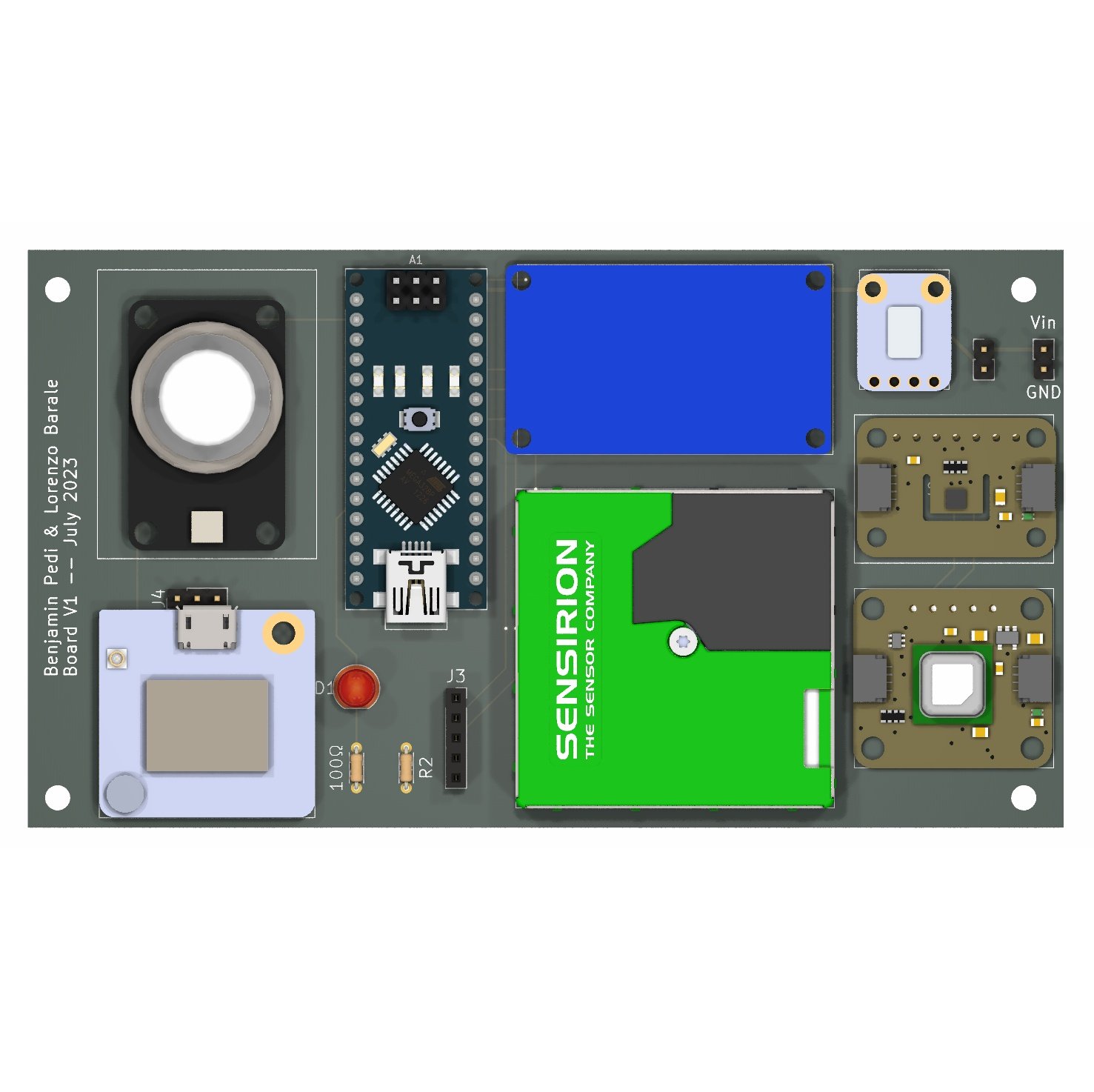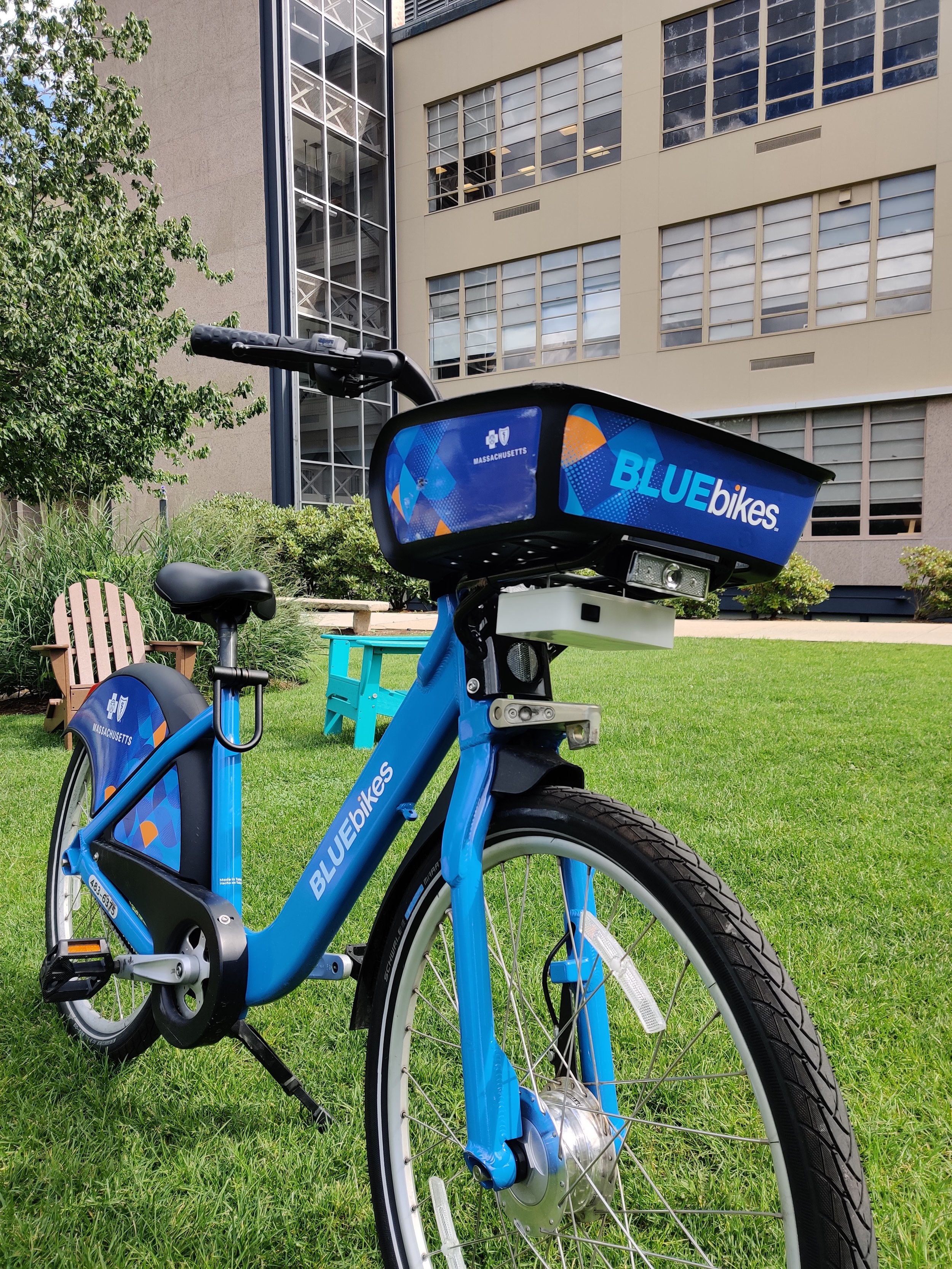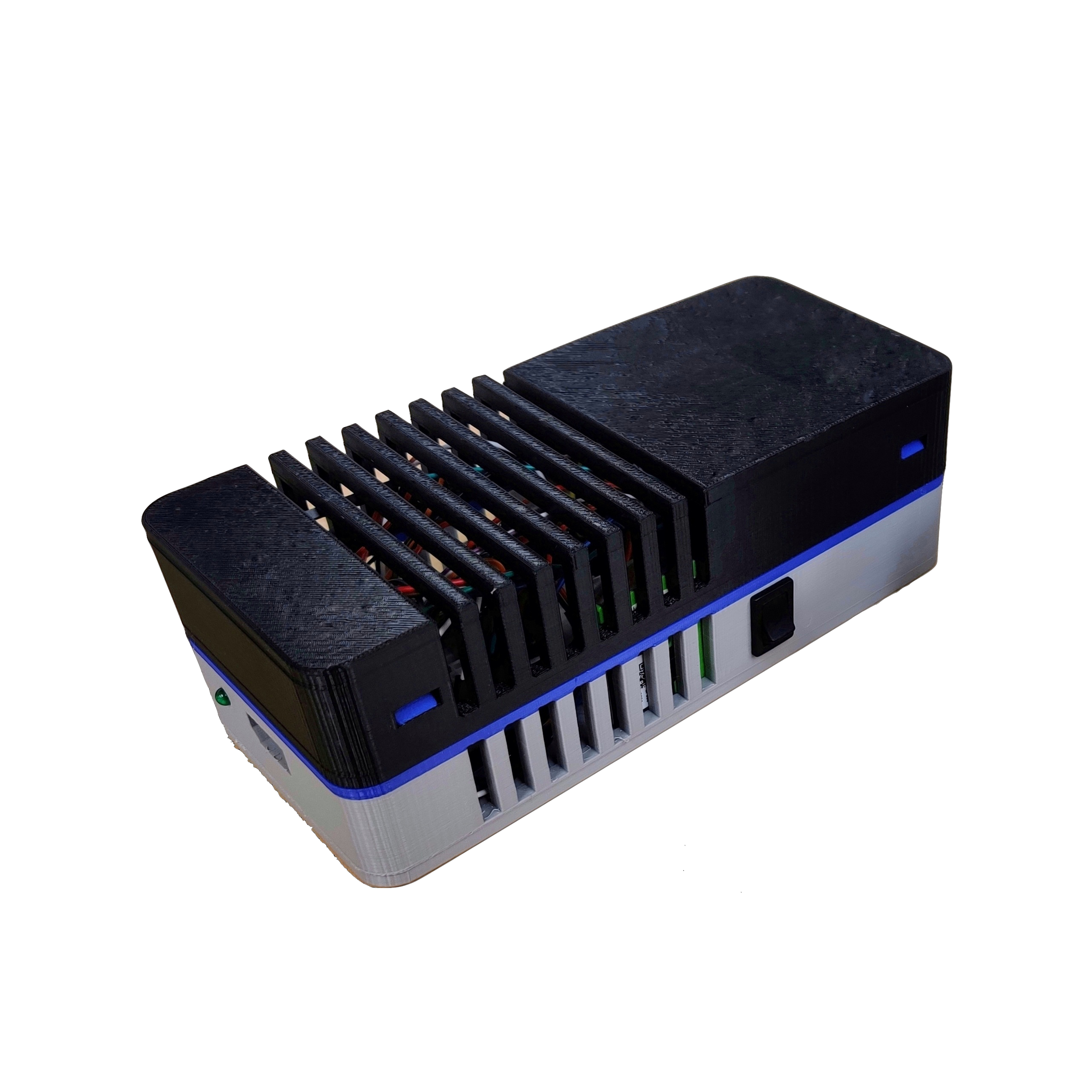Bike Pollution Sensor
This device is designed for installation on BlueBikes in Boston. It measures various environmental parameters including particulate matter (sizes 1, 2.5, 4, and 10 µm), CO2 , temperature , humidity , methane ( CH4), and nitrogen dioxide ( NO2 ). Additionally, it collects GPS coordinates to accurately assign these environmental values to specific locations on a map.
Case Prototype v1
This is the first prototype for the case, made in PLA with a 3D printer. To 3D CAD the case we used SolidWorks. The vertical parallel slits work as air intakes to make all sensors work in the proper way. On the sides there are also 3 other holes: one is for the LED that blinks when the device successfully writes data on the SD card, one for the micro USB for the Arduino and the last on the side is for the switch. The little raised slot inside the lower part is the housing for the GPS antenna. This entire enclosure is appositely made of the dimension of a big Arduino 830-holes breadboard, useful to test all the sensors and peripherals with normal wires.
Case Prototype v2
This second prototype is also made in PLA with a 3D printer. This design came along with the need to substitute the breadboard with a custom-made PCB. This case is smaller (volume reduced by 47%) and lighter, making it much closer to what a final product would be for end users. The hole on the side is made for the switch.
Custom PCB
To achieve a more compact and streamlined design for the device, we decided that the best approach was to create a custom-made PCB (Printed Circuit Board). This allowed us to eliminate most of the wiring. We designed a 4-layer PCB layout using KiCAD. For assembly, we utilized standard pin slots and manually soldered all the components. After completing the design, we ordered the PCB from an online supplier based in China.
Code
To create the code to make all the circuit working we used C++ using the Arduino IDE. Some of the sensors came with libraries already given from the manufacturer and some others are just analog*. All the sensors work together and the data is saved every 5 seconds on the SD card as a new line in a CSV file.
To post-process the data we used MATLAB because it is very powerful for managing CSVs, especially to display GPS coordinates with pre-existing functions.
Results
Our device succesfully measured PM, CO2, temperature, humidity, CH4 and NO2. It also demonstrated measurements of potential methane leaks on campus and in neighborhood (see pictures below).
Conclusion
This research/project has been possible thanks to the Campus Climate Lab at Boston University. Me and another brilliant guy worked on this project for a total of 10 weeks and we are happy with the result obtained. For more detail about the sensors used, the functioning and the results, please refer to this document.



















